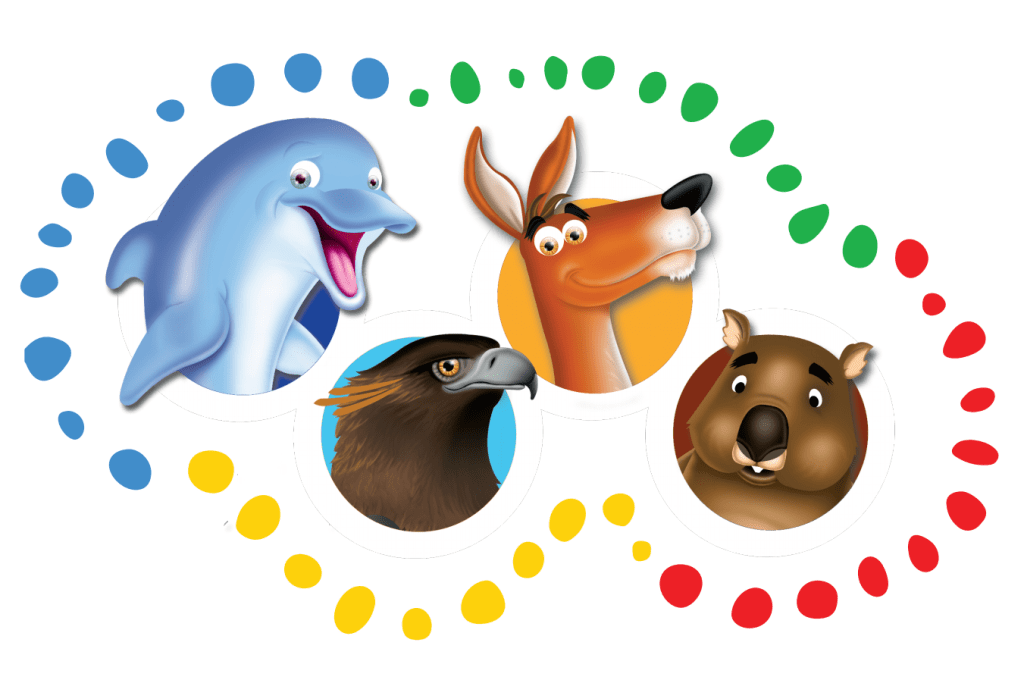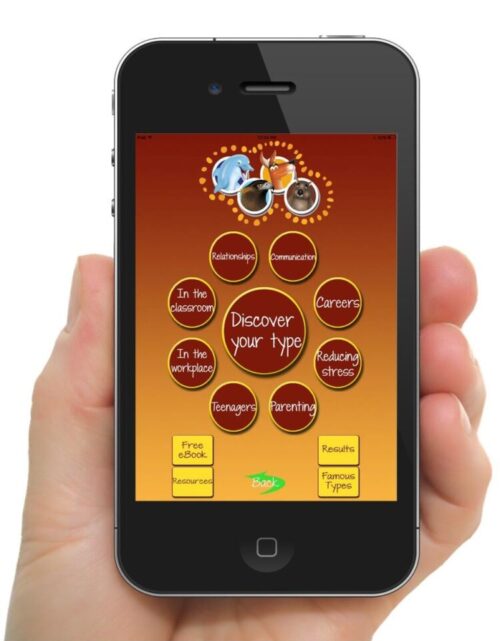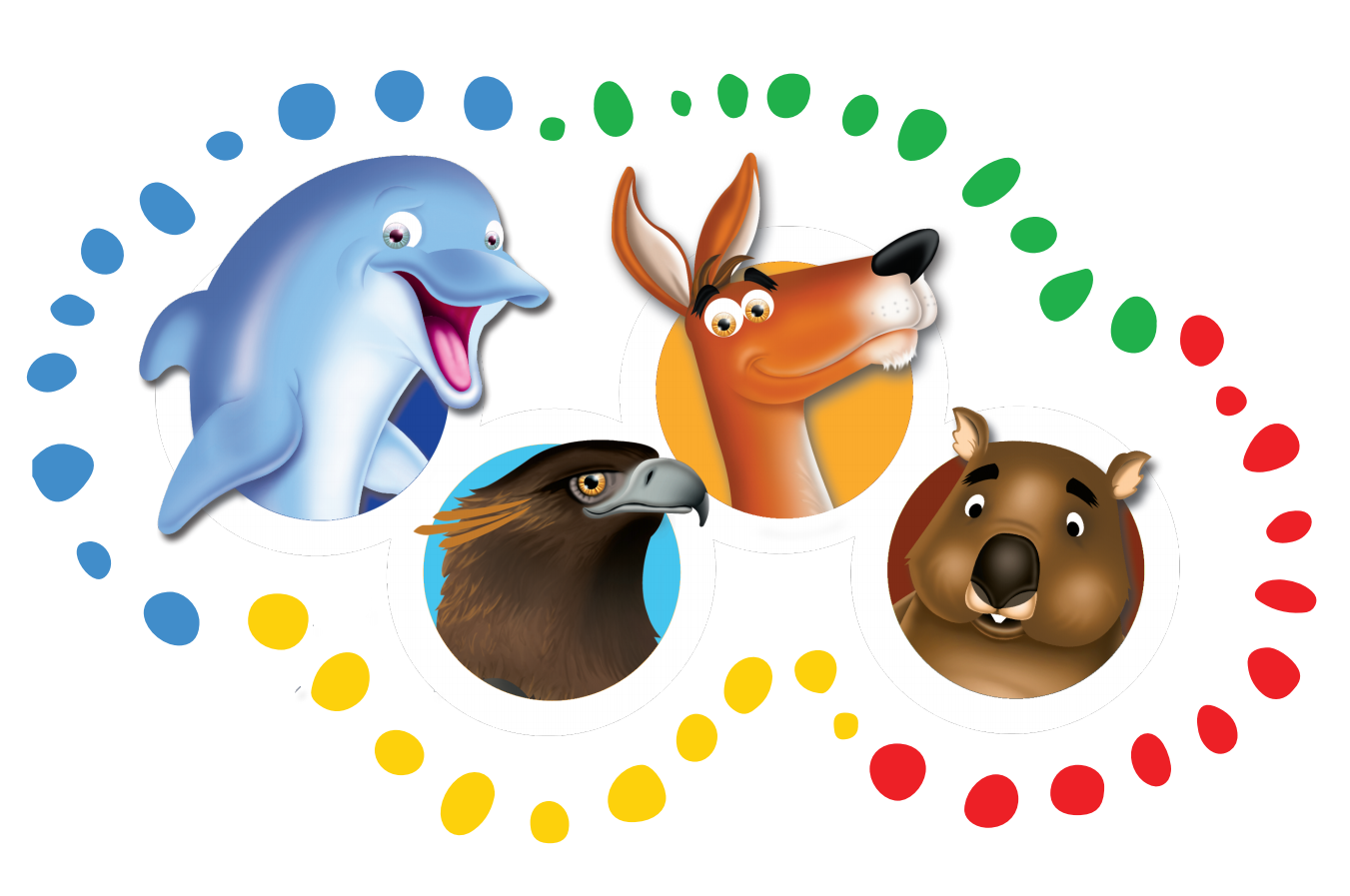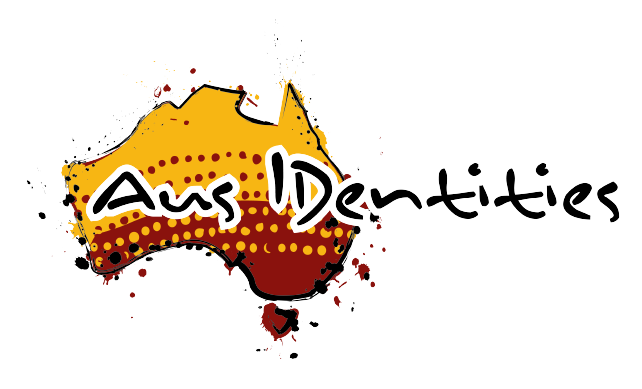What is AusIDentities?
AusIDentities is a colourful and dynamic alternative to existing models of personality type, such as the Myers-Briggs (MBTI), DISC and HBDI. The program, the characters and the resources are all visually appealing, rich in content and offer solutions to problems, not just the sometimes overly complex theories that often accompany such programs.
AusIDentities has been introduced to a growing number of business organisations, along with educational bodies such as TAFE and Universities, and around 350 schools across Australia. Many community groups, like the Red Cross, Scripture Union and Foster care Australia, have also introduced the program since its inception back in 2005.

What is it all about?
It’s all about differences and the unique ways that people express themselves. Without an understanding of what makes different people tick, intolerance, misunderstanding and frustration are the all too common components within human relationships. Fortunately these low level relationships can be replaced with understanding, acceptance and greater cooperation when we learn to appreciate other people’s unique contributions.
Through AusIDentities the path to understanding can be both fast and potentially life changing, and our vision is simple; ‘to share this information with as many people as possible, especially among our young people where 1 in 3 high-school students are predicted to suffer mental health issues, by offering a deeper understanding of the innate talents and core strengths that different people bring to world, both in an educational or a workplace setting.’

Meet the Creator
Michael White, trainer and personality expert, has helped literally thousands of people to improve the quality of their personal and/or professional lives through his workshops, keynotes, training programs, along with the creation of over 40 books and different resources that promoting self-awareness and improved understanding.

AusIDentities App
A mobile App that links people's personality traits to the characteristics of well-know Australian animals. The App provides key insights into human behaviour for three different age groups.

Who's Who in the Zoo?
An introduction to the four AusIDentities animal personalities. Understand if you are a Dolphin, an Eagle, a Kangaroo or a Wombat, and learn exactly what that means in terms of behaviour and values.
Read about the unique qualities of the types, and discover what makes you different to others and why people think and behave the way they do!

Frequently Asked Questions
Because we use the same foundation as the Myers-Briggs and DISC, it is a seamless transition into the world of AusIDentities. The real benefit is that the vast majority of people who attend an AusIDentities workshop will still remember their type months later, and what it means to be a certain type. With the Myers-Briggs especially we find that if you ask people what their four letter type is even a short time after a workshop, only a handful* are able to tell you and even fewer recall what it means.
If you are seeking to make a lasting change, wouldn’t you want to use a model that people can identify with and actually use going forwards? By using the metaphors of animals, we are able to create a model of how the types behave and interact, especially during times of stress, and apply this to the situation at hand which in this case is change. People readily identify with their type, and also find it easy to appreciate what others are going through, especially when the program is used in conjunction with some of the world-class products we have created.
Not really. If you understand the Myers-Briggs in depth, then you will know there are approximately twice as many ‘S’ types as there are ‘N’ types in the general population, and that pretty much everyone associated with the creation and evolution of the Myers-Briggs theories are ‘N’ types. AusIDentities was originally created with this in mind, to make the program more accessible to more people. We find the vast majority of people we work with really enjoy this more straightforward approach as it is not just the presenter that makes the difference, it is the way in which the audience ‘receives’ the information.
Yes. Dr. David Keirsey used personality type in schools for over 30 years and discovered many apparent truths about type and education. Certain types tend to do better, and certain types tend to do worse, as a broad generalisation. One of the biggest indicators of a student’s success though, was whether their type matched or conflicted with the type of the teacher. If it matched, the likelihood of success in that class went up.
Yes. After nearly 20 years of introducing type to schools, and typing over 20,000 teachers, we have discovered nearly 70% of teachers are Wombats. This result also matched the results they found in the USA.
Yes. After typing around 30,000 students, including more than 5,000 students at risk of disengaging from education, we have discovered around 90% of the students at risk of disengagement are in fact Kangaroos. This result also matches the numbers that come out of the USA.
Yes, or at least it would appear so. In the study conducted by Marisa Crawford and Graham Rossiter (Reasons for Living – 2006 – Australian Council for Educational Research), three significant factors that contribute to healthy self-esteem and engagement are: Meaning, Identity and Spirituality. AusIDentities was named such because it addresses Identity, and to a slightly lesser degree, Meaning.
Yes. The Queensland Association of State School Principals (QASSP), The Queensland Education Leadership Institute (QELI), The Department of Employment and Training (DET), Indigenous Education Leadership Institute (Stronger Smarter), Catholic Education, University of Central Queensland, University of the Sunshine Coast, Queensland Education, Scripture Union, Salvation Army, Foster Care Association of Australia and TAFE have all used and embraced the AusIDentities program.
No. We can teach the basic concepts to students as young as 7 or 8 in around 2-3 hours. We also run half-day and full-day training programs for teachers, who are then able to use the program in their classrooms.
